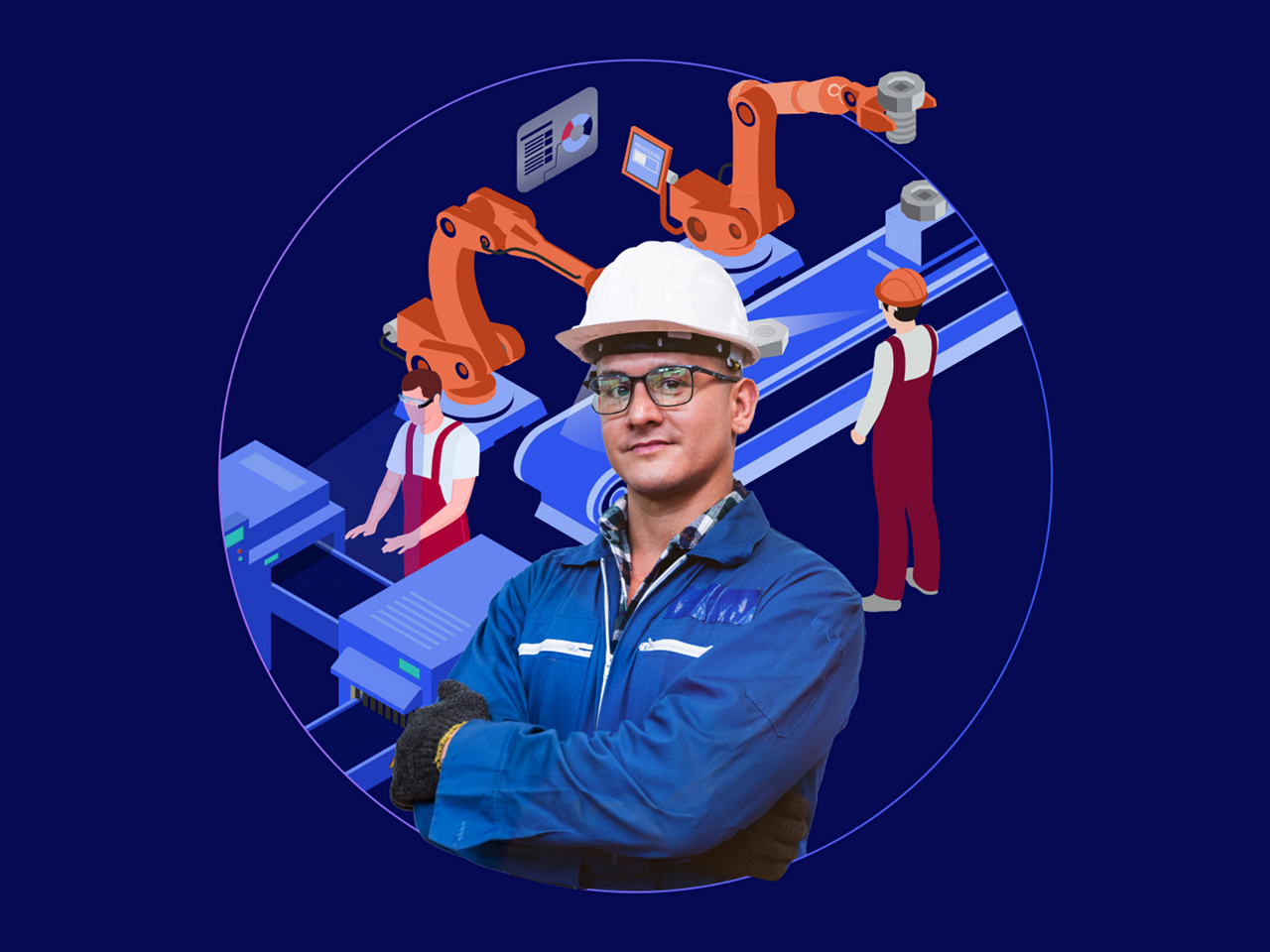Increase productivity by optimizing your manufacturing processes


To survive and thrive in this dynamic environment, companies are turning to innovative technological solutions such as augmented reality (AR) to optimize their manufacturing processes and improve productivity.
Empower your team with TeamViewer’s industry-proven AR solutions.
Augmented reality (AR) uses digital information, pictures, and video to enhance real-world views. Companies around the world are leveraging this technology’s power and flexibility to digitalize and improve their production processes. And you, too, can reap the benefits that industrial AR solutions deliver:
Industrial AR solutions help to increase efficiency by reducing or eliminating the distance and time between various stages of production. It enables remote collaboration and immediate communication between workers, supervisors, and managers.
Industrial AR solutions improve the accuracy and consistency of each process within a production line. For example, AR can provide information, guidance, and verification during logistics, assembly, inspection, or maintenance.
Enterprise AR solutions support quality assurance and control for products and processes. The data, pictures, and readings that are gathered can provide proof of compliance to international norms and standards.
Industrial AR solutions enable real-time data collection and analysis. Management then has the information and tools it needs to optimize each stage of production.
Enterprise AR solutions optimize processes by providing workers with immersive, interactive experiences. Using AR-enabled devices or glasses, workers see relevant instructions, feedback, or alerts in real time.
Industrial AR solutions offer effective, engaging on-the-job training and upskilling. Thanks to their flexibility, AR-powered learning programs can be adapted to the needs of individual workers.
Process optimization is the concept of improving a process to achieve a specific goal, such as reducing costs, increasing efficiency, enhancing quality, or complying with regulations. Companies that embark on a strategy of process optimization usually see an improvement in productivity and performance. The key is to identify how output can be increased while maintaining or in some cases even reducing input.
By optimizing manufacturing processes, manufacturers can streamline their production—cutting costs, reducing waste, and minimizing errors. This also frees up time to identify and exploit opportunities for innovation, resulting in a more competitive product that is closely aligned to market demand. So, by improving manufacturing processes, companies can become highly productive, more profitable, and enjoy a larger market share.
There are many barriers, both organizational and physical, that prevent manufacturers from optimizing their production and assembly processes. On a strategic level, management may lack the data and information to measure and analyze their processes. As a result, it is difficult to identify where improvements and optimization of production processes can be made.
What’s more, there are regular bottlenecks in the day-to-day running of an assembly line that slow down or hinder efficient manufacturing processes. These bottlenecks include:
TeamViewer Frontline is an enterprise productivity platform that provides industrial augmented reality (AR) solutions to optimize processes and improve production. Using the latest wearable tech such as smart glasses, employees on the assembly line can benefit from digitization to the same extent as their desk-based colleagues.
Thanks to Frontline, they enjoy faster onboarding, simplified workflows, better ergonomics, and prompt technical support. And for manufacturers, the benefits are clear to see in quicker processes, fewer errors, and improved product quality.
Frontline Make is TeamViewer’s powerful make-by-vision solution that presents step-by-step instructions to employees just when they need them. Information can be presented as text, images, videos, and audio, right in the field of vision via smart glasses. And tasks can be completed hands-free thanks to integrated voice commands, sensors, or image recognition that seamlessly pull up the data required. Legacy assets like mobile devices can also be leveraged for immersive trainings powered by AR on tablets or smartphones.
Like all the other Frontline products, Frontline Make supports a wide range of devices and operating systems, giving companies a choice of hardware—smart glasses, smartphones, tablets, wrist computers or a mixture of some or all of them. The platform can be hosted on-premises or via the cloud and is easily integrated to in-house production management systems or other backend systems if required.
Thanks to the Frontline Command Center, you can monitor the status and progress of production tasks, with real-time data, photos, and other documentation features ensuring high-level quality assurance. What’s more, you can easily build or modify assembly workflows in-house with Frontline Creator. No previous programming knowledge is required; the system works on simple drag & drop and point & click. So, if anything unforeseen happens, workflows can be adapted dynamically and sent out to the workforce immediately.
Manufacturers can adopt various strategies to optimize production processes. These include investing in innovative technology such as AR, scaling up holistic digital transformation.
There are four steps to implementing augmented reality when optimizing processes; define the problem and objective, analyze current processes and identify gaps, design, and test the AR solution, then implement and evaluate.